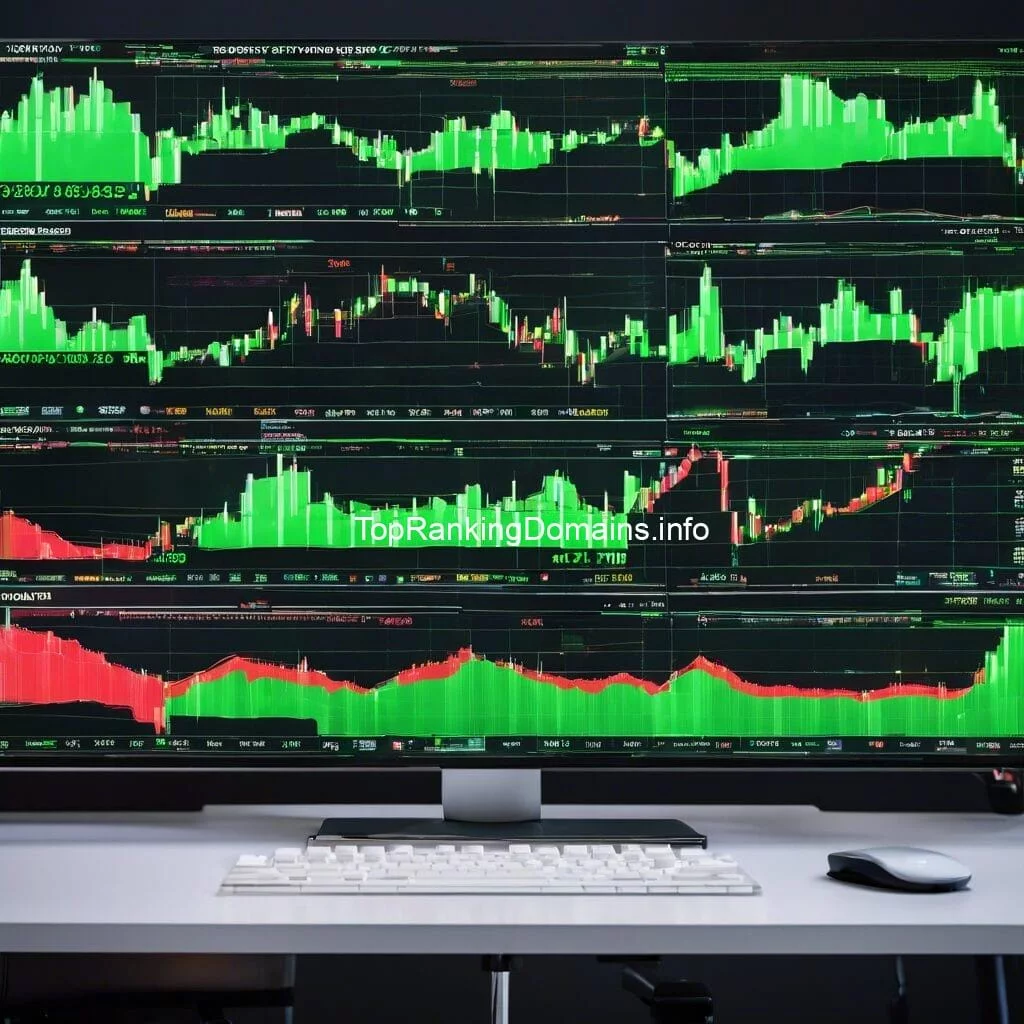Expert Guide to Minimizing Risks in Crypto Trading: Discover Proven Strategies and Tips
Introduction to Crypto Trading Risks
Crypto trading comes with its fair share of risks that traders need to be aware of. The volatile nature of the cryptocurrency market exposes traders to potential financial losses. The risk of price fluctuations, market manipulation, and regulatory changes are just a few examples. It is crucial for traders to have a solid understanding of these risks and their potential implications. By being aware of the risks involved, traders can then develop strategies to minimize their exposure and protect their investments. In the following sections, we will explore various strategies and tips to help traders navigate the crypto trading landscape with confidence and reduce the risks associated with it.
Overview of the potential risks in crypto trading
Crypto trading carries several potential risks that traders must be aware of. First and foremost, the volatile nature of the cryptocurrency market exposes traders to the risk of price fluctuations. Cryptocurrencies can experience significant price swings within short periods, leading to potential financial losses. Additionally, there is a risk of market manipulation, where large players can influence prices to their advantage. Regulatory changes and legal uncertainties also pose risks, as governments around the world continue to develop regulations for cryptocurrencies. Lastly, there is always the risk of cybersecurity breaches and hacking attacks, which can result in the loss of funds. Being aware of these risks is essential for traders to make informed decisions and protect their investments.
Understanding the importance of risk management in crypto trading
Risk management is crucial in crypto trading as it helps traders minimize potential losses and protect their investments. By implementing effective risk management strategies, traders can control their exposure to market volatility and mitigate the impact of unexpected price fluctuations. This involves setting clear risk tolerance levels, diversifying their portfolio, and implementing stop-loss orders to limit potential losses. Additionally, having a well-defined trading plan, adhering to risk management principles, and regularly analyzing and adjusting trading positions can help traders navigate the unpredictable nature of the cryptocurrency market and enhance their chances of long-term success. By prioritizing risk management, traders can make informed decisions and safeguard their capital.
Setting Up a Secure Trading Environment
Setting up a secure trading environment is crucial to safeguard your cryptocurrencies and minimize risks. One essential aspect is choosing a reputable cryptocurrency exchange that offers robust security measures, such as two-factor authentication and cold storage for funds. Additionally, implementing strong security measures for your trading accounts, such as using unique and complex passwords, regularly updating software, and using hardware wallets, can provide an extra layer of protection. By prioritizing security and taking necessary precautions, you can significantly reduce the risk of unauthorized access to your trading accounts and protect your investments from potential threats.
Choosing a reputable cryptocurrency exchange
When it comes to choosing a cryptocurrency exchange, it is crucial to prioritize reliability and security. Look for exchanges that have a strong reputation within the industry and are known for their robust security measures. Research their track record, read user reviews, and check if they have experienced any major security breaches in the past. It is also important to verify if the exchange is regulated and compliant with relevant financial laws and regulations. Additionally, consider factors such as user interface, trading fees, and available trading pairs. By selecting a reputable cryptocurrency exchange, you can minimize the risk of falling victim to scams or losing your funds.
Implementing strong security measures for your trading accounts
Implementing strong security measures for your trading accounts is essential to minimize the risk of unauthorized access and potential loss of funds. Start by choosing a secure and unique password for your account and enable two-factor authentication (2FA) for an added layer of protection. Regularly update your passwords and avoid sharing your account details with anyone. It is also advisable to use hardware wallets or cold storage solutions to store your cryptocurrencies offline. Additionally, be cautious of phishing attempts and only download wallets or trading apps from official sources. By taking these security measures, you can greatly reduce the risk of compromising your trading accounts.

Fundamental Analysis Techniques
Fundamental analysis techniques play a crucial role in assessing the value of cryptocurrencies. Traders use these techniques to evaluate the underlying factors that may impact the price of a cryptocurrency, such as its technology, team, adoption rate, and market demand. By analyzing these factors, traders can make informed decisions about buying or selling cryptocurrencies. Key fundamental analysis techniques include assessing the whitepaper and roadmap of a project, evaluating the team’s experience and expertise, examining partnerships and collaborations, and analyzing market trends and demand for the cryptocurrency. By utilizing these techniques, traders can gain a deeper understanding of the potential value and growth prospects of a cryptocurrency.
Using fundamental analysis to assess the value of cryptocurrencies
Fundamental analysis is a crucial technique for assessing the value of cryptocurrencies. It involves evaluating various factors that can impact the price and growth prospects of a cryptocurrency. Traders analyze the technology behind the cryptocurrency, the team’s experience and expertise, adoption rate, partnerships, and overall market demand. By conducting in-depth research and analysis, traders can gain insights into the potential value and future performance of a cryptocurrency. This enables them to make informed decisions about buying or selling. Fundamental analysis helps traders determine whether a cryptocurrency is undervalued or overvalued based on its underlying fundamentals and can provide valuable insights for long-term investment strategies.
Identifying factors that may impact the price volatility
When assessing price volatility in crypto trading, it is crucial to identify the factors that may influence it. These factors can include market news, regulatory developments, technological advancements, and overall market sentiment. For example, positive news about a cryptocurrency’s adoption by a major corporation can significantly impact its price. Similarly, government regulations or security breaches can cause price fluctuations. Traders must stay informed about these factors and analyze their potential impact on the market. By understanding these factors and their potential implications, traders can make more informed decisions and minimize risks associated with price volatility.

Technical Analysis Strategies
Technical analysis is a popular approach used by crypto traders to predict market trends and make informed trading decisions. It involves utilizing various tools and indicators to analyze historical price data and identify patterns and trends. Traders can use techniques such as moving averages, support and resistance levels, and trend lines to identify potential entry and exit points. By conducting technical analysis, traders can gain insights into market sentiment and make more accurate predictions about price movements. It is important to note that technical analysis is not foolproof and should be used in conjunction with other analysis techniques for a comprehensive trading strategy.
Introduction to technical analysis tools and indicators
Technical analysis tools and indicators are essential for conducting in-depth market analysis in crypto trading. These tools help traders identify patterns, trends, and potential entry or exit points. Commonly used technical analysis tools include moving averages, trend lines, support and resistance levels, and oscillators like the Relative Strength Index (RSI) or Moving Average Convergence Divergence (MACD). These tools provide valuable insights into market sentiment and can help traders make more informed decisions. By understanding how to interpret and utilize these tools, traders can have a better understanding of market trends and increase their chances of success in crypto trading.
Implementing technical analysis to predict market trends
Implementing technical analysis involves using a variety of tools and indicators to analyze historical price data and identify patterns that can help predict future market trends. Traders use tools like moving averages, trend lines, support and resistance levels, and oscillators to gain insights into market sentiment and potential price movements. By studying these indicators and patterns, traders can make informed decisions about when to enter or exit trades. Technical analysis is not foolproof and does not guarantee accurate predictions, but it provides valuable information that can be used alongside other analysis techniques to improve trading strategies and minimize risks.

Risk Mitigation Strategies
In order to minimize risks in crypto trading, it is essential to implement effective risk mitigation strategies. One key strategy is diversifying your portfolio by investing in a variety of cryptocurrencies. This helps spread out the risk and reduces the impact of any one investment’s performance. Another strategy is to implement stop-loss and take-profit orders. Stop-loss orders automatically sell a cryptocurrency when it reaches a specified price, limiting potential losses. Take-profit orders automatically sell a cryptocurrency when it reaches a specified price, securing profits. By implementing these strategies, traders can protect their investments and minimize potential losses in the volatile crypto market.
Diversifying your portfolio
Diversifying your portfolio is a crucial risk mitigation strategy in crypto trading. By spreading your investments across different cryptocurrencies, you reduce the impact of any single investment’s performance on your overall portfolio. This strategy helps to minimize the risk of losses in case one particular cryptocurrency experiences a significant decline in value. Additionally, diversification allows you to take advantage of potential gains in different sectors or types of cryptocurrencies. It’s important to research and select a varied range of cryptocurrencies based on their fundamentals, market outlook, and growth potential. Remember, diversification does not guarantee profits, but it helps to reduce the overall risk in your portfolio.
Implementing stop-loss and take-profit orders
Implementing stop-loss and take-profit orders is an effective risk mitigation strategy in crypto trading. A stop-loss order is a pre-set instruction to sell a cryptocurrency when its price reaches a specified level, limiting potential losses. On the other hand, a take-profit order automatically sells a cryptocurrency when it reaches a predetermined price, ensuring you secure profits. By setting these orders, you can protect your investment from unexpected market movements and capitalize on favorable price levels. It is essential to determine the appropriate stop-loss and take-profit levels based on your risk tolerance and trading strategy. Regularly monitoring and adjusting these orders can help you manage your positions effectively and reduce potential losses.

Staying Informed and Managing Emotions
Staying informed about the latest news and market developments is crucial for minimizing risks in crypto trading. By staying updated, traders can make well-informed decisions and adapt their strategies accordingly. It is essential to follow reputable sources, join crypto communities, and participate in discussions to gain insights and stay updated with factual data. Furthermore, emotions can play a significant role in trading outcomes. It is essential to manage emotions, such as fear and greed, by maintaining a disciplined trading approach. Successful traders adhere to their trading plans and avoid impulsive decisions based on emotions, which can help in minimizing risks and maximizing profits.
Staying updated with the latest news and market developments
Staying updated with the latest news and market developments is crucial for minimizing risks in crypto trading. Traders should rely on reputable sources to gather factual data and insights. By following reliable news outlets and reputable cryptocurrency communities, traders can stay informed about important events, regulatory developments, and potential market trends. Active participation in discussions and forums can provide valuable perspectives and help in analyzing market sentiments. By being well-informed, traders can make informed decisions, adapt their strategies, and stay ahead of emerging trends, reducing the risk of unexpected market fluctuations.
Handling emotions and maintaining a disciplined trading approach
When it comes to crypto trading, emotions can often cloud judgment and lead to impulsive decisions. It is essential for traders to develop strong emotional resilience and discipline. This can be achieved by setting clear trading goals, sticking to a well-defined trading strategy, and avoiding impulsive trades based on short-term market fluctuations. Traders should also learn to manage their expectations and not let greed or fear dictate their actions. By maintaining a disciplined approach and following a consistent trading plan, traders can minimize the risks associated with emotional decision-making and increase their chances of long-term success in the crypto market.

Conclusion
In conclusion, minimizing risks in crypto trading requires a strategic approach and discipline. By implementing strong risk management techniques, such as diversifying portfolios and using stop-loss orders, traders can protect their investments. Additionally, conducting both fundamental and technical analyses can help traders make informed decisions based on factual data. Staying informed about the latest news and developments in the crypto market is also crucial. Finally, managing emotions and maintaining a disciplined trading approach will help traders avoid impulsive decisions driven by fear or greed. By following these strategies and tips, traders can mitigate risks and increase their chances of success in the dynamic world of crypto trading.
Summary of the strategies and tips discussed
In this expert guide, various strategies and tips have been shared to help minimize risks in crypto trading. Traders are advised to implement strong risk management techniques, such as diversifying their portfolio to spread out their investments and reduce potential losses. Additionally, using stop-loss and take-profit orders can help protect profits and limit losses. Fundamental analysis should be utilized to assess the value of cryptocurrencies and identify factors that may impact price volatility. Technical analysis can be employed to predict market trends using tools and indicators. Staying informed about the latest news and developments in the crypto market is crucial, as is managing emotions and maintaining a disciplined trading approach. By following these strategies and tips, traders can mitigate risks and increase their chances of success in the dynamic world of crypto trading.
Final thoughts on minimizing risks in crypto trading
In conclusion, minimizing risks in crypto trading requires a combination of careful planning, analysis, and disciplined execution. By implementing strong risk management techniques, such as diversifying one’s portfolio and using stop-loss and take-profit orders, traders can reduce potential losses and protect profits. Additionally, a thorough understanding of fundamental analysis and technical analysis can help make informed trading decisions. Constantly staying informed about the latest news and market developments is crucial, as is managing emotions and maintaining a disciplined trading approach. With these strategies and tips, traders can navigate the volatile world of crypto trading with greater confidence and minimize risks effectively.







